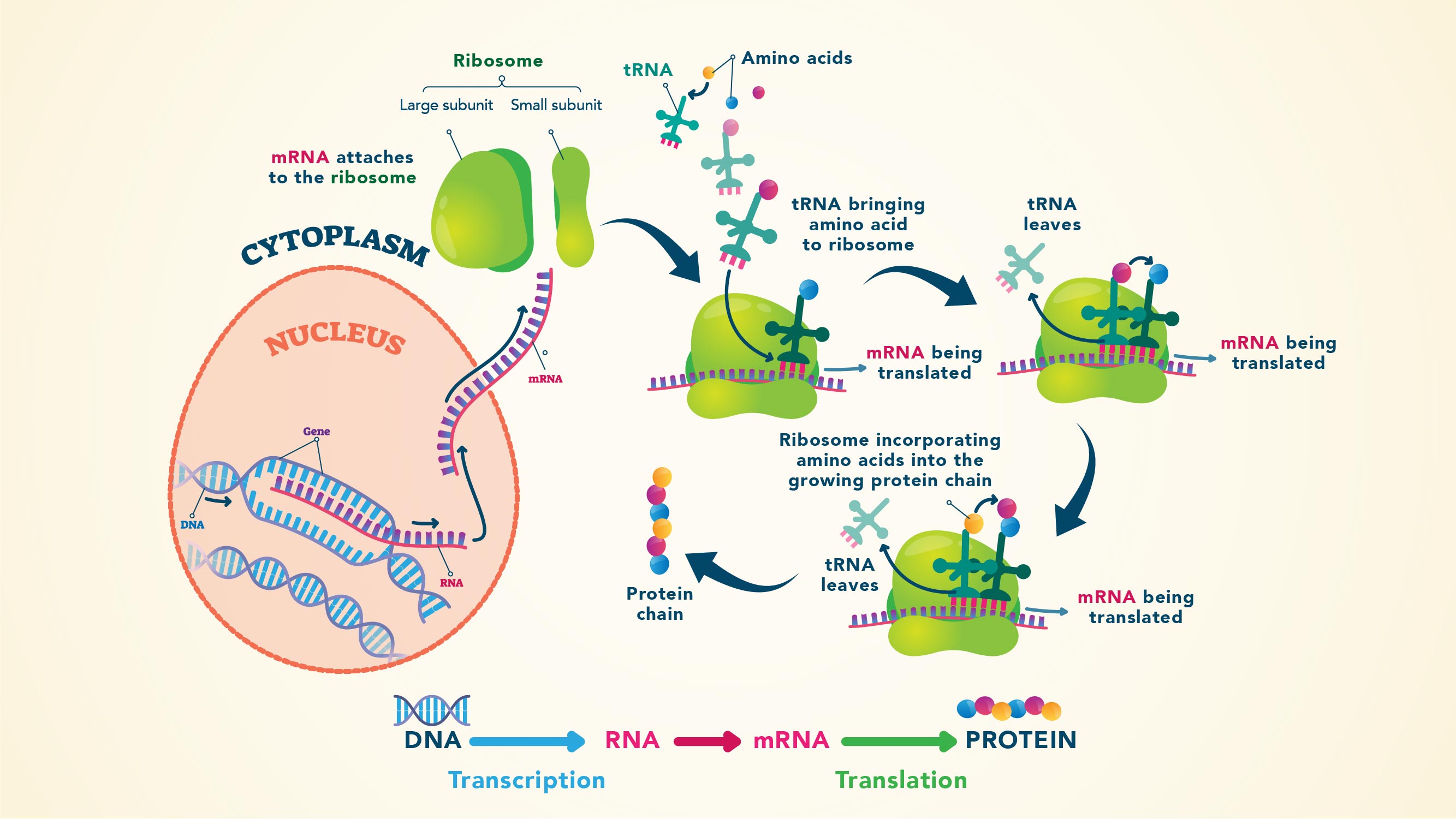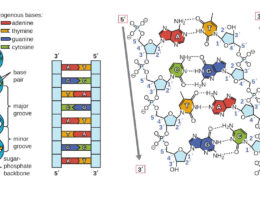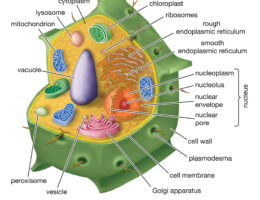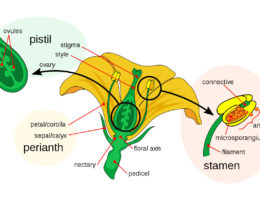Protein synthesis is the process by which cells make proteins. A labeled diagram of protein synthesis may include the following steps and structures:
- Transcription: In the nucleus, the DNA double helix is unwound and one strand is used as a template to make a single-stranded messenger RNA (mRNA) molecule. The mRNA is synthesized by RNA polymerase and complementary RNA nucleotides.
- mRNA processing: The newly synthesized mRNA undergoes a series of modifications, including the addition of a 5′ cap and a poly(A) tail. These modifications help protect the mRNA from degradation and facilitate its export from the nucleus.
- Translation: The mRNA travels to the ribosome, where it serves as a template for protein synthesis. Transfer RNA (tRNA) molecules, which have a specific amino acid attached, bring amino acids to the ribosome. The ribosome reads the mRNA codons and matches them with the appropriate tRNA anticodons, creating a polypeptide chain.
- Protein folding: The polypeptide chain folds into its final three-dimensional structure, determined by its amino acid sequence. Chaperone proteins can assist with proper folding and prevent misfolding.
- Post-translational modifications: The protein may undergo additional modifications, such as cleavage of signal peptides, phosphorylation, or glycosylation, to become fully functional.
The resulting protein can then perform a variety of functions in the cell, such as catalyzing chemical reactions, transporting molecules, or providing structural support.



